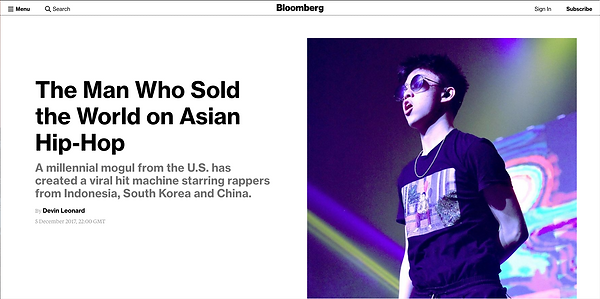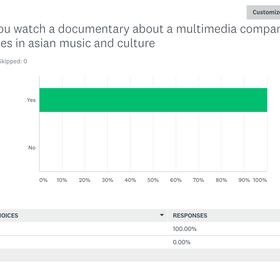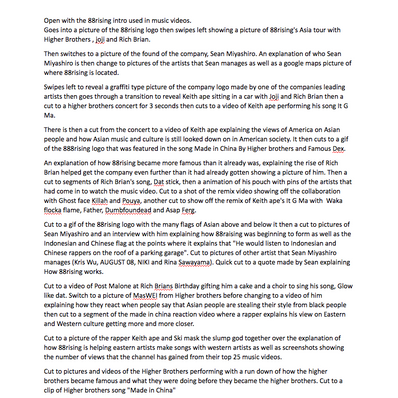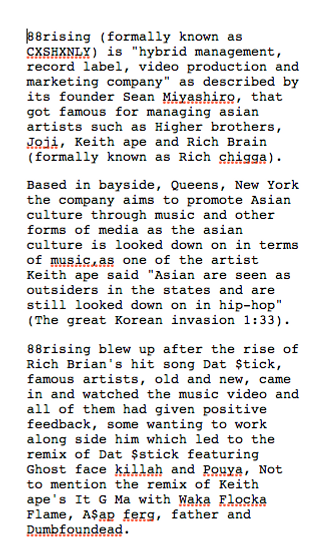
Unit 12
Michael Renov:
Record, Reserve, Reveal, Promote, Persuade, Analyse, Interrogate, Express
Forms:
Poetic, Expository, Participatory, Observatory, Reflexive, Performative
Documentary research:
There are many types of documentary, all of which have a huge impact on how the documentary will be made. Poetic Documentaries are very much what they sound like. They focus on experiences, images and showing the audience the world through a different set of eyes. Expository Documentaries are probably closest to what most people consider “documentaries.” A contrast to poetic, expository documentaries aim to inform and/or persuade often through narration over footage. Observational Documentaries are exactly what they sound like, they aim to simply observe the world around them. The style attempts to give voice to all sides of an issue by giving audiences first hand access to some of the subject’s most important moments. Participatory Documentaries, while having elements of Observational and Expository, include the filmmaker within the narrative. This could be as minor as the filmmaker’s voice being heard behind the camera, prodding subjects with questions all the way to the filmmaker directly influencing the major actions of the narrative. Reflexive Documentaries are similar to Participatory in that they often include the filmmaker within the film, however, unlike Participatory, they make no attempts to explore an outside subject. Rather, they focus solely on themselves and the act of them making the film. Performative Documentaries are an experimental combination of styles used to stress subject experience and share an emotional response to the world. They often connect personal accounts or experience juxtaposed with larger political or historical issues. This has sometimes been called the “Michael Moore” style, as he often uses his own personal stories as a way to construct social truths. Michael Renov is famous for
Animation
There are 12 principles of animation each one helps with making the animation look more realistic. 1. Squash and stretch 2. Anticipation 3. Staging 4. Pose-to-pose action 5. Straight ahead action 6. Follow through action 7. overlapping action 8. Slow-in and slow-out 9. Arcs 10. Secondary action 11. Timing 12. Exaggeration. The squash and stretch principle gives the illusion of weight and volume to a character as they move. This is done by expanding and compressing the character’s body. To see the principle in action, take a look at this scene from the Pixar short Day and Night. Notice how as the two characters dance around, their shapes compress ever so slightly and then stretch back into shape. As a result, we as an audience actually believe that they are dancing because we see the impact that gravity has on their bodies. Anticipation is used to let the audience know that a major action is about to take place. To do this, animators will often work in a smaller action or two, right before the major action to signal that something is coming. Notice how Thumper draws back his leg before breaking into a run? This is anticipation in action! Staging is the principle that every pose or action that a character makes should convey a clear intention. Take these images of Tinker Bell for instance. If you were to isolate Tink and make a silhouette of each of her poses, you would still be able to get the idea that Tink is overjoyed in the first pic, annoyed in the second pic, and feeling the zzzs in the final. Straight ahead and pose to pose refers to the techniques by which animation is crafted. The pose to pose technique involves drawing the key poses that you’d like the character to take first and then filling in the transitional poses second. The straight ahead technique is more nuanced and involves an animator literally crafting one frame after another, as in this early draft of an iconic Cinderella scene. The follow through principle argues that when a character is in action and stops, nothing stops all at once. So when a character is running and stops, their main body will stop, but the other parts of their body will keep moving for a bit after. For instance, in this scene, Mulan’s head stops first and then her hair. Slow-in and slow-out is another principle designed to add realism to the movement of characters. When characters are performing actions, animators will draw more frames at the start of the action, less frames in the middle, and more frames again at the end of the action to create this slow-in/slow-out effect. (Kind of like a pendulum!) Notice how Snow White’s actions in this scene are slow at the beginning and fast in the middle and then slow at the end. The arc principle is that almost all actions in life have a slightly circular motion. When a head turns or an arm moves, rarely will it thrust straight in and straight out. Often it will have a little curve to it. This Mickey GIF does a great job of illustrating this! A secondary action is an additional action that reinforces and adds more dimension to the main action. The main action in this scene is Bolt’s mouth and the carrot, but the animators also threw in some adorable secondary leg action to reinforce the cuteness of the scene. Timing helps create the illusion that an action is abiding by the laws of physics. By adjusting the timing of a scene, animators can make that scene look either slower and smoother (with more frames) or faster and crisper (with less frames). Exaggeration is all about overstating certain movements in a way that helps evoke a point, yet doesn’t ruin the believability of the scene. As you can probably guess from the previous GIFs, Disney is pretty darn good at this. But just in case you forgot, and also because we can’t help ourselves, here’s another prime example. Each principle helps to make animation look more realistic and flow smoothly from-by-fram.
IMDb Persepolis summary
In 1970s Iran, Marjane 'Marji' Statrapi watches events through her young eyes and her idealistic family of a long dream being fulfilled of the hated Shah's defeat in the Iranian Revolution of 1979. However as Marji grows up, she witnesses first hand how the new Iran, now ruled by Islamic fundamentalists, has become a repressive tyranny on its own. With Marji dangerously refusing to remain silent at this injustice, her parents send her abroad to Vienna to study for a better life. However, this change proves an equally difficult trial with the young woman finding herself in a different culture loaded with abrasive characters and profound disappointments that deeply trouble her. Even when she returns home, Marji finds that both she and homeland have changed too much and the young woman and her loving family must decide where she truly belongs.
In the animated film, Persepolis, they use of the 12 principles are subtle in each scene and frame


Early documentry
Cinéma Vérité vs Direct cinema
In 1877 Eadweard Muybridge took sequential photographs of moving horses and animated them with the zoópraxiscope. The Lumiére brothers invented the first movie camera in 1895 that could hold fifty feet of film stock, with which they captured a train pulling up to a station. As a result, the concept of unedited documentation of real-life situations referred to as “actualities” came about. Today the two most commonly used genre, however, are Direct cinema and cinema vérité.
The purpose of this film was to document the murder of a police officer in Texas USA.
They used a observational approach when making the documentary, they'd gotten all of the people involved to come in and tell the story from their point of view. It was to help uncover/ reveal what happened during the time of the murder. The re-enactments help to show you the possibilities of what took place since the people involved and eyewitness accounts credibility are all they have to offer. The overall construct of the narrative starts off with the crime, then the convict into finding out the convict is the wrong person from here it spirals into the revelation of the real culprit then finally they reveal the real murderer and sentence them.
Persepolis Essay:
This is about the animated movie know as Persepolis and how it uses some of the 12 animation techniques to tell its story. Unlike a Disney animation, the principles of animation in Persepolis are subtle so it's harder to notice them whilst watching the movie, however, there are a few that are not so subtle and make it easier to notice.
An example of this is Exaggeration, at 51:29 the character is yelling at three other women, who were making fun of her, and her jaw enlarges. This adds to the effect of Marjane being angry with the other women this adds less seriousness to the situation but shows that it this is not a comical one. before this scene Marjane is sitting on her own and over hears the woman talking about her their is a scene in which Marjane exhales heavily, you can see puffs of steam coming from her nostrils. The final example I could find of this is, at 49:00 and 49:20 where Marjane is explaining puberty and her growth spurt parts of her body are blown out of proportion. Another example of her body being out of proportion is during 12:30 Marjane's mother tells her "How would you like it if I nailed your ears to the wall" in which Marjane imagines nails in her ears and hanging off of the wall trying to get down.
Also in 49:00 to 49:20 there is the Arc principle that is used when Marjane is talking about her breasts and her butt getting bigger, the arc principle.
Another principle is squash and stretch at 27:17 and 27:18 where the two woman are judging Marjane on what she's wearing they tell her she's "Dressed like a punk" because her trainers look different and her coat looks different. The effect is used when the two woman are judging her, one of them movies lower and they begin to stretch and once they come back up they get thinner/squash.
Another principle that was use was Follow through action, although it was subtle, the follow through action was used in the party scene at 3:45, Marjane's uncle notices Marjane chasing after her friend and he turns around to tell them to be careful and the cups of liquor also move as his body is turning, this can also be the principle of timing as the animator had made sure that the drinks followed the laws of Physics. When a person turns around with a drink in their hand, the drink follows the persons movement. Another example of this is 2:16 where a woman is putting on lipstick, her top lip follows the lipstick she applies.
Another principle used is Staging, at 7:57 you can see a character running then stopping, getting ready to throw a rock at the people that are attacking and then continuing to run away.
Back on roads screening:
Today, we watched a prison documentary the documentary was meant to highlight and show that not all prisoners are there vicious people and the prison system is not as violent as people believe it to be.
The documenter had worked along side prison inmates, interviewing them

The animated gif that I've made I drew a blob that drops and then bounces away. I drew three different blobs, one which is the first frame the second is the blob on the ground and the final frame being the blob bouncing up.
Planning:



Synopsis:
88rising is a mass media company that founder Sean Miyashiro describes as hybrid management, record label, video production and marketing company. The company gained popularity through its musical platform, working with many different asian artists such as Joji, Rich Brian (formerly known as Rich chigga), Higher brothers, Kieth ape and as of recently Kris Wu. The founder, Sean Miyashiro, says that its not a music based company and that it is "really a media/video content focused company at heart".
Primary research:

Secondary research: There are not many documentaries on music, however there are many different documentaries on Asia and asian culture which I could use to help structure the documentary as well as using videos of live performances and the famous 88rising intro that they use in music videos and other media productions. Although 88rising is not just a music production company they rose to stardom through the rise of Rich Brian (rich chigga) and Joji, Rich Brian (rich chigga's) song Dat $tick gave 88rising even more fame after famous rappers such as Lil yachty, Ghost face killah, Tory Lanez, Desiigner etc reacted to the video with positive feedback. Later on 88rising had signed the Chinese rap group out of Chengdu Higher brothers and from Seoul South Korean rapper Keith ape, the company has since then helped each of the rappers to colab with each other ( Wechat by Higher brothers and Keith ape, Gospel by Rich Brian xxxtentacion and Keith ape etc). The company was created by Sean Miyashiro. He would regularly listen to rappers from Indonesia and China. Whilst he was with his girlfriend at her college, he had to leave because the music was too loud and so he would go to a near by garage and listen to music on the roof top with a weak broadband connection. from there he began mixing taps making his own music then perfomring at the college. After some time he managed to build his own team, 88rising, and managed there he built the company from the ground up gathering multiple investors and people that work in all creative industries.
Treatment

Script:

































